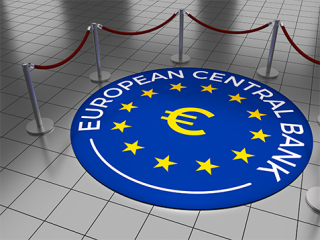Posted by Peter van Roozendaal and Jochen Wenz[1]
Banks and other financial institutions have a crucial role to play in society, and are of great importance for a country’s financial and economic health. The global financial crisis ten years ago showed that if big banks fail, countries are in trouble.
In response to the crisis, the EU Member States transferred the supervision of the largest banks from national supervisors to the European Central Bank (ECB). After the so-called Single Supervisory Mechanism (SSM) took effect in November 2014, the ECB became responsible for early detection of emerging threats to the financial system, so as to be ready to respond swiftly and decisively, if necessary.
More recently, in 2017, the Italian government moved in to support three banks with public funds. Furthermore, the ECB assessed one Spanish bank as “failing or likely to fail”. All four of these banks are supervised by the ECB. Overall, the ECB is responsible for supervising the 129 largest banks in the euro area, holding assets of some €21 trillion. Given these developments, the question arises: who checks the supervisor?
In performing its supervisory role, the ECB is accountable to the European Parliament and the European Council through a self-reporting mechanism. However, self-reporting alone is not enough. Although the ECB is subject to external audit by the European Court of Auditors (ECA), the ECA’s audit scope is restricted to the “operational efficiency of the management of the ECB.”
In its first audit of the supervisory work carried out by the ECB in 2016,[2] the ECA encountered major obstacles. It was unable to obtain relevant documents from the ECB. Arguing that the ECA’s audit mandate is limited, the ECB largely denied the ECA access to documents on its supervisory activities. As a result, the ECA was not able to assess whether the ECB is supervising big European banks in an adequate manner. Later reports published by the ECA found similar obstacles, thus confirming a significant gap in the independent control of banking supervision. We would argue that all banking supervision by the ECB must therefore be subject to independent external audit, as is the case with other public bodies.[3]
This is one of the conclusions of a report[4] published by several European Supreme Audit Institutions (SAIs), including the German Bundesrechnungshof and the Dutch Algemene Rekenkamer. Both SAIs had comprehensive audit mandates in the field of banking supervision before the ECB took over these functions in 2014. These mandates included responsibility for auditing and assessing the way national supervisors dealt with individual banks, and went far beyond the ECA’s mandate regarding the ECB.
The European Commission is fully aware of this audit gap concerning banking supervision. In its recent review of the SSM,[5] the Commission confirmed that the scope of the SAIs’ audit mandates varies significantly. A joint effort undertaken by the ECA and the ECB to conclude an inter-institutional agreement on the exchange of information, as recommended by the Commission, is a first step in the right direction. Ultimately, however, what is required is to clarify or amend the legal framework. There is an urgent need to explicitly determine the ECA’s audit mandate vis-à-vis the ECB in its capacity as a supervisory body. As a result, an opportunity has been missed to ensure that the ECA is given full access to ECB documents, and to close the audit gap that has arisen.
As is the case with all public law entities, supervisory bodies must be subject to comprehensive audit by independent SAIs. Accountability and transparency are of crucial importance for the democratic legitimacy of public institutions, and will not be achieved through self-reporting by the ECB alone.
Medium-sized and small banks can also trigger crises. There are thousands of such banks in the EU. Since November 2014 these banks are indirectly supervised by the ECB, in conjunction with their national supervisory bodies. The report by the SAIs highlights another alarming trend: The ECB increasingly subjects this part of banking supervision to its confidentiality regime. As a result, national SAIs are denied access to ECB documents. This is not acceptable and impedes national SAIs in exercising their statutory audit mandates.
It is important to restore confidence in banking supervision. To achieve this goal, banking supervision needs to become more transparent rather than less. Seen from a national audit perspective in Europe, the ECB supervisory regime in its current form represents a step backwards in terms of transparency. Banking supervision has become a “black box” posing risks to financial sector stability in the years ahead.
[1] Dr. van Roozendaal is with the Algemene Rekenkamer, the Court of Audit of the Netherlands; and Dr. Jochen Wenz is with the Bundesrechnungshof, German Supreme Audit Institution.
[2] ECA Special Report No 29/2016: Single Supervisory Mechanism - Good Start but Further Improvements Needed, https://www.eca.europa.eu/en/Pages/DocItem.aspx?did=39744
[3] In contrast, the ECB’s other core function, its role as a central bank, is not subject to independent external audit.
[4] https://www.eca.europa.eu/sites/cc/Lists/CCDocuments/Task_Force_EBU/Task_Force_EBU.pdf
[5] https://ec.europa.eu/info/sites/info/files/171011-ssm-review-report_en.pdf
Note: The posts on the IMF PFM Blog should not be reported as representing the views of the IMF. The views expressed are those of the authors and do not necessarily represent those of the IMF or IMF policy.








